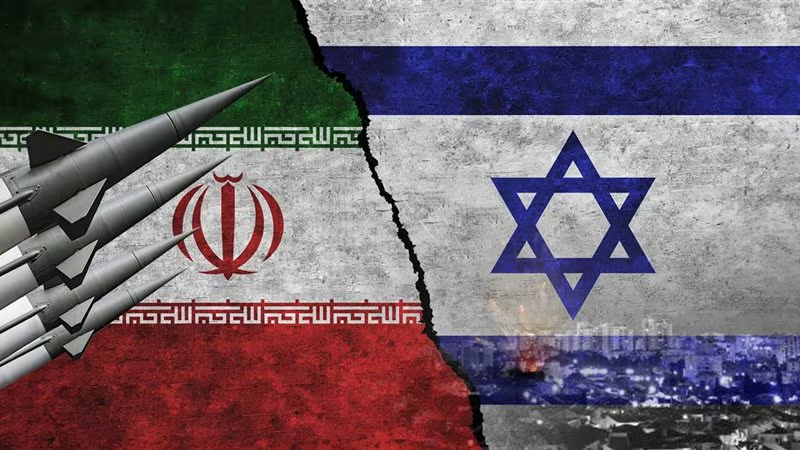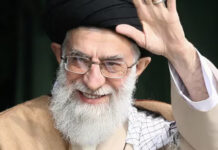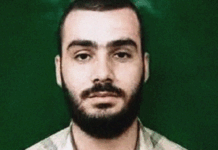Autor: N. Mozes*
Wprowadzenie
Na przestrzeni ostatnich trzech tygodni, pojawiły się liczne doniesienia w nie-arabskich mediach stwierdzające, że Rosja, która poza Iranem jest głównym sojusznikiem Syrii, podjęła decyzje o zwiększeniu swojego militarnego zaangażowania w tym kraju i uczestniczy w walkach obok sił rządowych syryjskiego reżimu Baszara Assada. W niektórych doniesieniach twierdzi się również, że te plany są już wprowadzone w życie. Media arabskie, zarówno sprzyjające, jak i przeciwne Assadowi, również donosiły o rosyjskim militarnym zaangażowaniu w Syrii. Doniesienia koncentrują się na kilku głównych kwestiach: budowa nowej rosyjskiej bazy wojskowej koło miejscowości Dżabla, na syryjskim wybrzeżu, wzmocnienie jednostek rosyjskich, w tym pilotów samolotów bojowych, udział rosyjskich pilotów w nalotach na opozycję i na pozycje Państwa Islamskiego (ISIS) w Syrii, dostawa nowoczesnej broni, w tym samolotów bojowych.
Jeszcze w marcu 2015, Assad zwrócił się do Rosji z prośbą o zwiększenie jej obecności militarnej w Syrii. Powiedział wówczas rosyjskim mediom: “Rosyjska obecność w różnych miejscach na świecie, w tym na Bliskim Wschodzie, i w porcie Tartus, jest czynnikiem tworzącym równowagę, którą świat utracił po upadku Związku Radzieckiego. Jeśli o nas chodzi, im bardziej ta obecność wzrasta, tym lepiej dla stabilności w regionie, ponieważ Rosja odgrywa kluczową rolę w globalnej stabilności. Witamy wszelkie zwiększenie rosyjskiej obecności na Bliskim Wschodzie, a w szczególności na syryjskim wybrzeżu i w portach, ale oczywiście jest to uzależnione od planów rosyjskiego kierownictwa politycznego i wojskowego na temat tego, gdzie rozmieści swoje siły w różnych miejscach…” [1]
Powiązania militarne między Rosją i Syrią nie są niczym nowym; zaczęły się w czasach Związku Radzieckiego i były kontynuowane po jego upadku. Podczas obecnej wojny w Syrii, która szaleje od 2011 roku, obie strony potwierdzały ich militarne powiązania i fakt, że Rosja zbroi siły rządowe w oparciu o porozumienia podpisane przed wybuchem wojny.
Najbardziej znaczącym przykładem rosyjskiej obecności w Syrii jest baza wojskowa w mieście portowym Tartus, która obsługuje rosyjskie okręty pływające na Morzu Śródziemnym. Mniej widocznym przykładem jest obecność wojskowych ekspertów w różnych bazach wojskowych na terenie Syrii. Dowody zostały ujawnione w bazie Kunajtira w Tel Al-Hara na południu Syrii, która wpadła w ręce opozycji w październiku 2014 roku. Znalezione tam dokumenty wskazywały na to, że był to wspólny, rosyjsko-syryjski, ośrodek wywiadowczy. [2] Były również doniesienia o Rosjanach walczących w tej wojnie u boku armii Assada, [3] jednak władze rosyjskie twierdzą, że byli to najemnicy rekrutowani przez rosyjską firmę, której uprawnienia zostały później cofnięte.
W odpowiedzi na najnowsze doniesienia, o tym, że Rosja zwiększyła swoje militarne zaangażowanie w Syrii, rosyjski prezydent, Władimir Putin, oświadczył, że jego kraj dostarcza rządowi w Syrii “szeroko zakrojonego poparcia w zakresie wyposażenia, ćwiczeń wojskowych i broni. Rozważamy wiele opcji, ale ta kwestia [zwiększenia militarnego zaangażowania] nie była jeszcze na stole.” [4] Rosyjskie Ministerstwo Spraw Zagranicznych zareagowało podobnie: Wiele dni po tym jak amerykański Sekretarz Stanu, John Kerry, powiedział w rozmowie telefonicznej swojemu odpowiednikowi, Sergiejowi Ławrowowi, że jest zaniepokojony doniesieniami, iż Rosja zwiększyła swoją obecność militarną w Syrii, rzeczniczka rosyjskiego Ministerstwa Spraw Zagranicznych powiedziała, że Ławrow odpowiedział Kerremu: „Rosja nigdy nie ukrywała faktu, że przekazuje syryjskiemu rządowi wojskowe wyposażenie, tak by mógł on zwalczać terroryzm” oraz że „Rosja będzie w dalszym ciągu dostarczała pomocy dla rządu syryjskiego”. [5]
Reakcje reżimu syryjskiego na doniesienia o intensyfikacji rosyjskiego zaangażowania wojskowego w Syrii nie były jednorodne. W wywiadzie dla stacji telewizyjnej Hezbollahu, Al-Manar TV, syryjski Minister Informacji, Omran Al-Zou’bi zaprzeczył tym doniesieniom i twierdził, że nie ma rosyjskich wojsk lądowych, ani morskich, ani aktywności lotnictwa rosyjskiego na terytorium Syrii. [6] Dla odmiany, zastępca Ministra Spraw Zagranicznych, Faysal Al-Maqdad, potwierdził rosyjską obecność militarną, ale stwierdził, że ogranicza się to tylko do wojskowych doradców. [7]
Z drugiej strony wydaje się, że syryjskie i libańskie media zbliżone do syryjskiego rządu szybko informowały i potwierdzały te doniesienia, dodając nowe szczegóły. Tak na przykład artykuł w libańskim dzienniku Al-Akhbar, który jest blisko syryjskiego rządu, stwierdzał, że “Armia Czerwona walczy w Syrii” i że tysiące żołnierzy elitarnych rosyjskich jednostek jest rozmieszczonych w kraju.
Wydaje się, że powodem publikowania tych doniesień jest chęć przesłania przez rząd Assada, tak do zwolenników, jak i przeciwników, informacji, że nadal ma poparcie Rosji. Łączy się to z licznymi niedawnymi doniesieniami, że Rosja nawiązuje bliskie stosunki z Arabią Saudyjską, która stoi na czele opozycji wobec reżimu syryjskiego oraz, że rosyjskie stanowisko wobec rządu syryjskiego i samego Assada zmieniło się. Należy tu wspomnieć, że ten trend pozytywnych doniesień w pro-rządowych mediach na temat wzmocnienia rosyjskiej obecności jest sprzeczny z linią, którą reżim i związane z nim media utrzymywał dotychczas – była to reguła zaprzeczania [tej obecności] oraz pomniejszania udziału Iranu i Hezbollahu w walkach w Syrii.
Natomiast media syryjskiej opozycji i przeciwne Assadowi media arabskie, w odróżnieniu od mediów pro-rządowych, były bardzo lakoniczne w doniesieniach o rosyjskiej obecności, za to szeroko donosiły o irańskim zaangażowaniu i o obecności Hezbollahu. Mogło to być wynikiem chęci unikania drażnienia Rosji przez syryjską opozycję i jej sojuszników, którą [również oni] uważają za kluczowy czynnik w rozwiązaniu syryjskiego kryzysu, w szczególności w świetle doniesień o bardziej elastycznym stanowisku Rosji wobec obecnego syryjskiego reżimu i w świetle wahań obecnej amerykańskiej administracji.
Pierwsza oficjalna reakcja syryjskiej opozycji na rosyjską interwencję w Syrii pojawiła się dopiero 10 września 2015, około trzy tygodnie po pojawieniu się doniesień o wzroście rosyjskiego militarnego zaangażowania w Syrii. Rzecznik szefa sztabu Wolnej Syryjskiej Armii (FSA), Mustafa Farhat, ostrzegł, że rosyjska interwencja w Syrii jest “niebezpieczna” i zagroził, że Wolna Armia Syryjska i syryjscy powstańcy zmienią Syrię w rosyjski cmentarz. Farhat wezwał również Turcję i kraje Zatoki oraz społeczność międzynarodową aby powstrzymała Rosję. [8] Źródła opozycyjne powiedziały publikowanemu w Londynie saudyjskiemu dziennikowi, Al-Sharq Al-Awsat, że celem Rosji jest ustanowienie lojalnego kantonu (minipaństwa) na syryjskim wybrzeżu, które rozciągałoby się od portu Tartus do Latakii, obejmując miasta Banijas i Dżabla, podobnie jak region Donbasu na Ukrainie [kontrolowany przez pro-rosyjskich separatystów].” [9]
Niniejsza praca jest przeglądem wysiłków mediów reżimu syryjskiego, by rozegrać i potwierdzić twierdzenia o zwiększonym zaangażowaniu armii rosyjskiej w Syrii.
Dalszy tekst nie jest tłumaczony na polski.
Regime-Affiliated Daily Publishes Article By Thierry Meyssan: „The Russian Army Is Involved In Syria”
On August 26, 2015, the Syrian daily Al-Watan, which is close to the regime and which often publishes articles byFrench journalist and activist Thierry Meyssan, author of 9/11: The Big Lie, published a Meyssan article titled „The Russian Army Is Involved In Syria” exposing the establishment of a joint Russian-Syrian military committee and the military and intelligence aid that Russia is providing to the regime. It stated: „Although at the beginning of the conflict Russia refrained from taking part in the military operations, this did not prevent it from recently establishing a joint Russian-Syrian military committee. Within a few weeks, many advisors arrived in Damascus, and proposed the establishment of an additional Russian military base in Jableh. Recently, Damascus received six MiG-31 jets – considered the best in the world [10]… At the same time, Moscow began equipping Damascus, for the first time, with satellite photos. This decision, which took [Russia] five years to make, will completely change the situation on the ground…” [11]
Article In Regime-Affiliated Lebanese Daily Al-Akhbar: „The Red Army Is Fighting In Syria”
Nahed Hattar, columnist for the Lebanese daily Al-Akhbar, which is close to the Assad regime, confirmed, in a column titled „The Red Army Is Fighting In Syria,” reports that another Russian military base had been established in Jableh, and also reported that Russian forces were deployed in several areas across Syria, including Homs, Hama, Dar’a in the south, and 'Ain Al-Sawda, on the Turkey-Syria border. According to Hattar, these [measures] comprise a strategic action that will expand until a comprehensive Syrian-Russian strategic alliance is established, with the aim of changing the balance of power in the Middle East. He added that following the dismantling of Syria’s chemical weapons „Syria was placed under the Russian nuclear umbrella,” and noted: „The Russian military battle presence in the Syrian war has become a fact, and it may expand and develop, and have more impact on the ground… in the last third of the month of August 2015, officers and fighters from the Red Army landed at the first Russian military combat base in Syria… which is located at Hamimim in Jableh next to Latakiya… [where] infrastructure of an airport was set up, and which includes a military camp for pilots and select units – which could by now number 1,000 troops, but which certainly will increase to 3,000. Naturally, the number of Russian troops deployed in a number of areas, including Homs, Hama, Latakiya, Dar’a, and 'Ain Al-Sawda,is not known. According to diplomatic reports, a Russian rapid intervention force is deployed at a base near Damascus..
„When discussing with Syrian officials the reports in the media and in the field that Russia is beginning to join the fighting in Syria, [their] first answer is 'defense contacts between the countries are long-term, permanent, and developing, and what is happening now is within the framework of cooperation and surprises none but those whose imagination causes them to think that Moscow will not go all the way with us.’ That is, [these officials are saying that] the reports on the increase in Russian military activity in Syria are 'correct’ but 'in general, not in terms of the specifics’…”
Hattar added that the Syrian army’s air power has recently increased, and that Russia is providing Syria with satellite photos of the battlefronts. He wrote that „the Red Army has begun to fight alongside the Syrian people in the defensive war against terrorism” and stressed that this is not a development of the past weeks, but a move that began this spring, when Assad told the Russian media that he supports establishing a new Russian military base on Syria’s coast. According to Hattar, this does not come in response to fears of the development of an ISIS pocket in Damascus, but is a carefully examined strategic move. He added: „This move will expand until the establishment of a comprehensive Russia-Syria strategic alliance aimed at changing the balance of power in the Middle East from the roots…”
Also according to Hattar, the turning point in the Russia-Syria military relationship was the understanding that Syria’s chemical weapons had to be dismantled in order to prevent an American attack: „At that moment, Syria was placed under the Russian nuclear umbrella…” He added that Moscow had coordinated the current military expansion in Syria with Iran. [12]
Syrian Army Facebook Page: Russian Pilots Participated In Bombing Rebel-Held Idlib
The Syrian Army Facebook page reposted an item originally posted on the pro-Assad „Heroic Deeds Of The Syrian Army – Syria-victory” Facebook page that included photos (below) of „Russian Pchela-1T drones and SU-27 and SU-34 jets that carried out attacks above Idlib.” The post notes that the photos „confirm the reports that the Russians are at a Syrian Air Force base and are carrying out attacks on positions of ISIS and other Islamic organizations (since Syria has no SU-34 planes, only Pchela-1T drones).” [13]

The Lebanese Al-Akhbar daily also published, and confirmed, this report: „We have been informed by reliable sources in the field that the reports on these [Facebook] pages are 100% correct. That is, the reports in the Israeli newspapers in the past two days, about 'new developments in the Syrian arena,’ have become reality on the ground, that is, [there is now] direct Iranian and Russian fighting alongside Syria, and Russian pilots are participating in battle missions along with the army. This is being done as part of a trend to strengthen the Syrian army’s capabilities with the latest drones, which was agreed among Moscow, Tehran, and Damascus in recent weeks.” [14]
Lebanese Dailies Close To The Assad Regime: Russia Has Begun Supplying Advanced Weaponry To Syria
On September 9, 2015, following reports that the U.S. had asked Bulgaria and Greece to block the passage of Russian planes to Syria via their airspace due to suspicions that they were transporting military assistance to the Syrian regime, the daily Al-Akhbar wrote: „It appears that the implementation of the Russia-Iran agreement to upgrade the Syrian army’s armament level has begun. Therefore, the U.S. has recruited its connections in order to damage the air bridge that was established by Moscow in early September, and that is meant to continue until September 24, 2015. The rapid American response proves that there is information on the advanced standard of the arms and munitions being carried by the Russian planes to Syria via the skies of Bulgaria and Greece.” [15]
The Lebanese daily Al-Safir, which is also close to the Syrian regime, cited a Syrian source claiming that „up to now there is no substantial difference with regards to Russian forces operating on Syrian territory. We are still dealing exclusively with experts, advisors and trainers.” The source noted that although the pace of implementing the arms agreements by the parties still does not meet Syrian demands, several weeks ago a group of Russian experts began examining airfields in Syria and expanding the runways at some of them, mostly in northern Syria. This occurred after Syria asked to be armed with MI-28 combat helicopters to improve its nighttime military activity. According to the source, Russia armed the regime with advanced weaponry such as BTR-82 armored personnel carriers, BM-30 Smerch rocket launchers and additional Orlan UAVs. [16]
’Al-Safir’: Russian Intervention Is Part Of Military Collaboration With Iran, Pre-Coordinated With It Months Ago
Al-Safir also reported that Russian military involvement in Syria is effectively taking place as part of military collaboration with Iran in north Syria, and that it was pre-coordinated between the two countries months ago. The daily stated that „this collaboration is manifested by a joint operations room” and by the two’s sharing of the Hamimim airfield near Latakiya. It daily added that the Russians had begun operating an independent Russian air operations base at the site, and that they are working there near the air supply lines of Iran’s Islamic Revolutionary Guards Corps (IRGC). The collaboration between Russia and Iran, it said, that had hitherto been limited to coordinating the air supply that is currently being conducted via Iranian airspace, should expand in the coming weeks, with the end of the Russian air bridge on September 24, 2015.
The paper went on to state that the military collaboration between Iran and Russia in Syria, and the preparations for Russian military involvement there, had begun in July, particularly after the July 14 announcement of the JCPOA that lifted the international boycott of Iran. It said that IRGC Qods Force commander Qassem Suleimani had visited Moscow in early August at Russia’s invitation, and had met with Russian President Vladimir Putin; this meeting, it noted, had been part of the preparations for expanding Russian military involvement in Syria. [17]
On Their Facebook Pages, Regime Supporters Post Photos Of Russian Fighters
Additionally, several supporters of the Syrian regime posted photos on their Facebook pages of Russian soldiers in Syria, apparently taken from other sources. Although some of the soldiers are stationed in Tartus and the location of others is unclear, the regime supporters’ posting of these photos on their Facebook pages shows this sector’s support of this sector for the Russian military presence.
On the pro-regime Facebook page „Bidna Nitsarah” („We want to be discharged”), belonging to regime army soldiers from the 102 draft class, one user posted several photos of Russian soldiers in Syria (see below) and noted: „Photos of Russian soldiers fighting alongside the heroes of the Arab Syrian army. Of course these pictures were photographed in Damascus, Homs, Latakiya, and Tartus, and they were taken from the Facebook pages of the soldiers. This is just the beginning.” [18]

*N. Mozes is a research fellow at MEMRI.
Endnotes:
[1] Al-Hayat (London), March 28, 2015.
[2] See MEMRI Inquiry & Analysis No. 1138, Following Killing Of Hizbullah Operative Jihad Mughniyah, New Information Comes To Light Regarding Hizbullah, Iranian Activity In Syrian Golan On Israeli Border, January 28, 2015.
[3] See MEMRI JTTM, Pro-Assad Russian Fighters Reportedly Killed In Syria, October 23, 2013.
[4] RT.com, September 4, 2015.
[5] Al-Hayat (London), September 8, 2015.
[6] Champress.net, September 8, 2015.
[7] Syria-news.com, September 10, 2015.
[8] Alarabiya.net, September 10, 2015.
[9] Al-Sharq Al-Awsat (London), September 11, 2015.
[10] Russia denied the report that it had furnished MIG-31 planes to Syria Sputniknews.com, August 22, 2015.
[11] Al-Watan (Syrian), August 26, 2015.
[12] Al-Akhbar (Lebanon), September 7, 2015.
[13] Facebook.com/syrianarmy18,,September 3,.2015
[14] Al-Akhbar (Lebanon), September 4, 2015.
[15] Al-Akhbar (Lebanon), September 9, 2015.
[16] Al-Safir (Lebanon), September 7, 2015.
[17] Al-Safir (Lebanon), September 11, 2015.
[18] Facebook.com, September 5, 2015.
Visit the MEMRI site in Polish: http://www2.memri.org/polish/
If you wish to reply, please send your email to memri@memrieurope.org .









